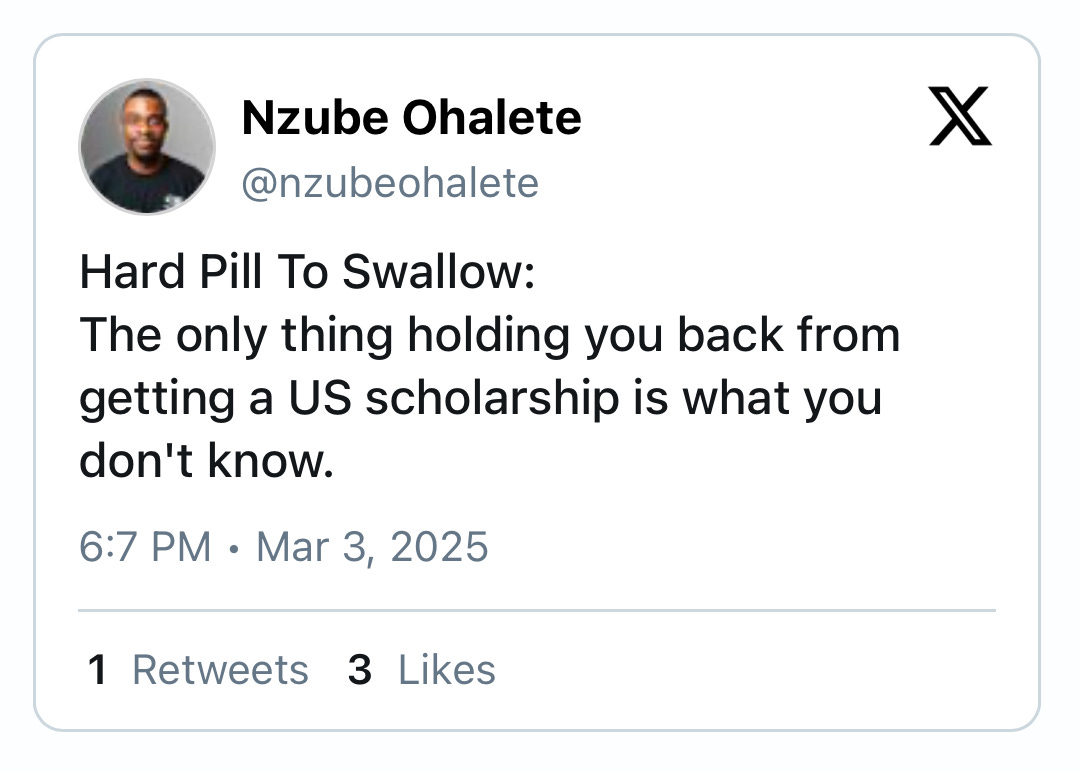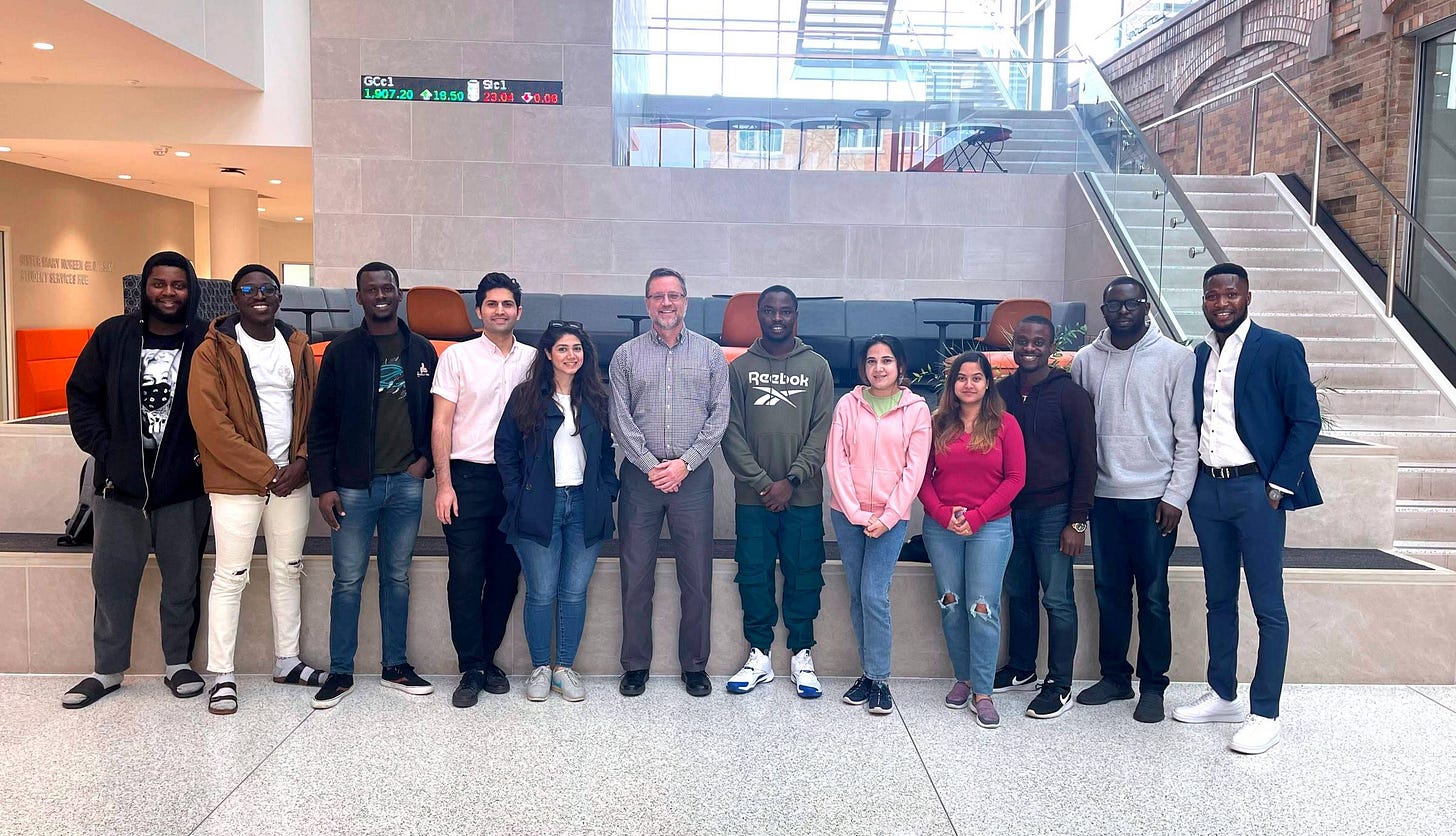How to Get Application Fee Waivers in 2025

Welcome to another edition of ScholAfrica. If this was forwarded to you, you can subscribe here.
Today, you will learn how to apply to U.S. Universities without paying application fees.
Cost Savings
I’ll do anything for free stuff. ~ Sandra Bullock
Who doesn’t like free stuff? I do
I’d love to move to the U.S. for free, but with the way the U.S. admission process is set up, it’s a challenge.
Let me explain:
You can apply to one school and get admission with a scholarship. But, your visa approval chances are slim (not impossible).
Why?
U.S. visa officers expect every serious student to apply to at least 4-5 schools. (Indians and Chinese apply to at least 20)
And this makes sense.
If you are a curious student that wants to advance your career, will you apply to only one school?
What if you don’t get admitted? You’ll have to wait till the next application cycle before applying again.
Now, according to U.S. News and Reports, the average application fee in the U.S. is $45 per school. Some schools charge as high as $120.
If you are applying to 5 schools: $45 x 5 = $225
What if you didn’t have to pay that?
What if you don’t even have the money to pay in the first place?
I don’t care how much money you have, free stuff is always a good thing. ~ Queen Latifah
Even if you have the money, you can use it for something else. I want to show you how one of my mentees applied to 19 U.S. universities without paying application fees.
Here’s how to do it, step by step:
Step 1: Search Online
The right information at the right time is the secret sauce of U.S. applications.
By the way, I just started posting consistently on X. Let's connect there and share some love.
Sometimes, I share videos about universities without application fees on my YouTube channel. Other YouTubers do the same too.
You need to surround yourself with like-minded people who are on the same journey as you. When I was applying in 2017, the place for me was Twitter and a WhatsApp group of First Class Holders. Samuel Adeleye owns the group. Today, we have more YouTube channels, as well as Telegram and WhatsApp groups, devoted to this.
If you search online, you will find them. When you do, join whichever one resonates with you.
Another search is on the website of your desired school.
You can check if they offer application fee waivers or free application weeks. For example, the University of Alabama gives free application weeks every year. It happens around October.
Step 2: Attend Information Sessions
U.S. Applications isn’t about filling the form and hitting “submit”.
You need to immerse yourself in that program.
If you want to get a new phone, you’ll do some research, right? You will watch video reviews on YouTube, blog reviews, ask some friends, etc. You are asking:
What are the pros and cons?
What are the great features?
How do you maximize it once you get it?
And finally all these things guide your decision.
The same thing applies to your U.S. applications.
Yes, I know you want to travel, but the school you attend here greatly impacts your life in the U.S. after school.
You need to plan to attend the information sessions of every university you want to apply to.
There are two reasons for this:
You get more details about the program. (beyond what they wrote on their website)
You get application fee waiver codes for your application.
Details about the information session are on your department’s website. Confirm the date and mark it on your calendar. If you don’t see anything there, ask the program co-ordinator. That also shows you are a serious student. More bonus points for you.
For example, Missouri S&T has a lot of information sessions coming up. They even wrote, "All events listed on this page will offer an application fee waiver for attendance". Go and book your slot immediately before the slots are filled. Then return here after. I'll wait. 😊

Step 3: Ask the Program Co-ordinator
If there is only one person you must talk to before applying, it is the program co-ordinator.
A lot of people think it is all about submitting strong applications to get scholarships. The truth is that it is not. You need to submit strong applications, and build relationships.
As human beings, we love to help our friends. Make friends with the program coordinator and some professors (if possible). It will help you a lot.
Now friendship doesn't mean you send them an email asking them: "How was your night?" or "I had rice for lunch yesterday, what did you have?" Please don't do that. You didn't hear that from me.
Remain professional in your communication. You can have lunch with them when you come to the US. You will notice that a lot of U.S. professors are really friendly. (sadly, not all of them though)
This is a picture of international students with our Master's program coordinator. Students from Ghana, Nigeria, and Nepal all in one picture. Very beautiful memories.
During my PhD applications, I reached out to the program coordinator of the 10 universities I was considering. I wanted to establish connections with them. And to make my name more familiar. My full name is a tongue twister for a lot of them (Nzubechukwu) so I wanted them to start getting used to it. LOL
In that email, I sent my CV and transcript, then introduced myself and my interest in the program. I didn’t ask for application fee waiver in the first email. (and this is important)
Don't appear needy to a program co-ordinator. That's not a good energy. You want to show you are very interested, but not needy.
Another suggestion for the first email could be to ask about the information session. Again, something that shows your interest in the program.
Then when I started applying, I sent them another email asking for the application fee waiver. This shows I was serious because I already started applying to the school. I was taking action on my interest.
Some of them granted the waiver. Some told me they don’t waive applications for anyone. And some others directed me to ask the graduate college.
You can see an email format in this video.
Step 4: Ask the Graduate College
90% of the time, you should have gotten the application fee waiver before this step.
But if you haven’t, you can send an email to the Graduate College.
Sometimes they grant the application fee waivers, not the program coordinators. So you can send them an email going straight to the point. You aren’t trying to build a relationship like the program coordinator.
Explain your financial hardship and ask them for a waiver.
This helped me get an application fee waiver from BGSU when applying for my PhD.
Putting It All Together:
Getting application fee waivers is possible, but requires intentional steps:
Searching online for opportunities.
Attending information sessions of your program.
Asking the program coordinator after developing a relationship with them.
Asking the graduate college, alongside explaining your financial hardship.
With these steps, you will definitely apply to some (or all) U.S. universities for free.
Bear in mind that you need to contact more schools than you plan to apply to. I reached out to 10 schools but finally applied to 5. Some schools will not agree no matter what you do. And that's okay too (if you have 5 others that agreed).
That’s all for this week.
See you next Wednesday.

Whenever you're ready, there are 2 ways I can help you:
The Scholarship Accelerator: My detailed mentorship program specifically designed to help you secure U.S. scholarships for your Master's and Ph.D. You will learn the 14 steps you need to take to relocate to the U.S., and a Telegram community to ask me any questions you have during the process.
F1 Visa Interview Consultation: Get your F1 visa in your next interview. I combine my five F1 visa interview experiences with my expertise in learning from visa officers to prepare you for your visa interview thoroughly. We will identify your strengths and prepare you to deliver them confidently. Your story is the secret to your visa approval.






